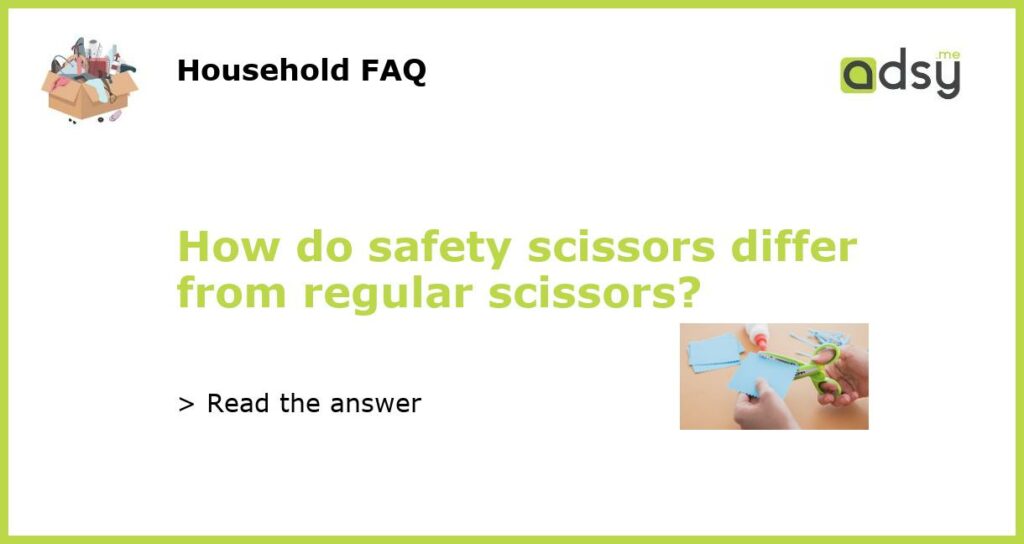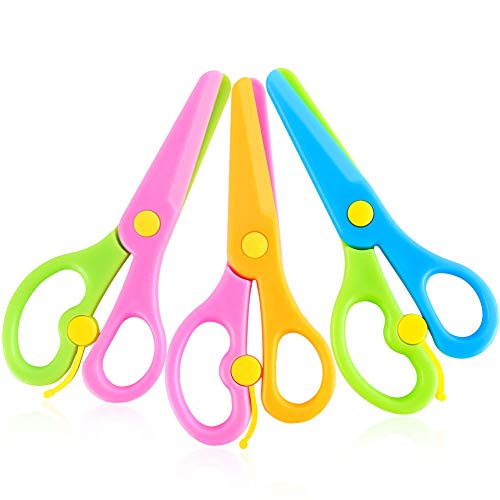Regular Scissors vs Safety Scissors: What’s the Difference?
Scissors are an essential tool in many households, offices, and classrooms. They come in different shapes, sizes, and designs to suit various cutting tasks. One common question that often arises is how safety scissors differ from regular scissors. While they may seem like similar tools, there are distinct features and uses that set them apart. Let’s explore the key differences and understand when and why each type of scissor is preferred.
Design and Structure
The design and structure are the primary factors that differentiate safety scissors from regular scissors. Regular scissors have a traditional design with two symmetrical blades that pivot on a screw. The handles are shaped to accommodate the fingers comfortably, and there may be finger loops or grips for added control. The blades of regular scissors are usually sharp and come to a fine point, making them ideal for precise cutting tasks.
On the other hand, safety scissors are specifically designed for young children or people with limited fine motor skills. They feature a blunted or rounded tip to minimize the risk of accidental injuries. The blades of safety scissors are also often covered by a plastic or metal guard that prevents the user from directly touching the blades. This guard ensures that only the paper or material being cut comes into contact with the blades, reducing the chances of accidental cuts.
Usage and Applications
Regular scissors are versatile tools that can be used for a wide range of cutting tasks. They are commonly used for arts and crafts projects, cutting paper, fabric, thin plastic, and more. Regular scissors are also favored by professionals like hairdressers and seamstresses due to their precise cutting capabilities. Additionally, regular scissors are available in various sizes, with larger ones being used for cutting heavier materials like cardboard or upholstery.
Safety scissors, on the other hand, are designed for specific target audiences, especially children. They are often used in classrooms, preschools, and daycare centers where young children are learning to cut with scissors for the first time. Safety scissors make it easier for children to handle and control, reducing the risk of accidents. These scissors are also widely used in therapeutic settings and for individuals with physical disabilities or limited dexterity.
Safety Measures and Precautions
The safety features of scissors play a vital role in preventing accidents and injuries, especially with children. Regular scissors don’t have built-in safety features, so it is important to exercise caution when using them and keep them away from the reach of children. Users should ensure that the blades are always closed and stored securely when not in use. Additionally, proper handling techniques, like holding the scissors with the fingers inside the finger loops, help minimize the risk of accidents.
On the other hand, safety scissors provide an added layer of protection with their built-in safety features. The rounded tip and blade guards significantly reduce the risk of accidental cuts, making them a safer option, particularly for children. However, it is still crucial to supervise children when they are using safety scissors to ensure they are cutting in the correct direction and not misusing the tool in any way.
When to Choose Safety Scissors over Regular Scissors
While regular scissors are suitable for most cutting tasks, there are specific situations where safety scissors are a better choice. Safety scissors are recommended when introducing young children to cutting activities, as they provide an added level of safety. These scissors are also ideal for individuals with limited fine motor skills, such as those with disabilities or elderly people with arthritis. Additionally, safety scissors are commonly used in environments where there is a higher risk of accidents, such as schools or therapy centers.
Ultimately, whether you choose regular scissors or safety scissors depends on the intended use, target audience, and level of safety required. It is essential to consider the task at hand, the age and capabilities of the user, and any necessary safety precautions before deciding which type of scissor to use.






